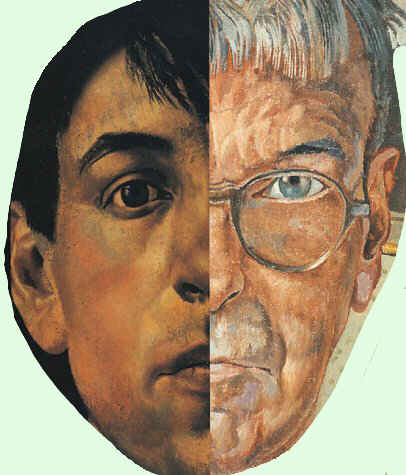1919 John
W. Strutt (Lord Rayleigh), English physicist born on 12 November
1842. He worked on the theory of waves. He became the Cavendish Professor
of Physics at Cambridge and was awarded the 1904 Nobel prize for the discovery
of the gas Argon.
1882
Charles J. Guiteau, hanged for the assassination of President Garfield
^top^
After only four months in office, while
on his way to visit his ill wife in Elberon, New Jersey, President
James A. Garfield, 49, was shot in the back and the arm at the
railroad station in Washington DC, by Charles J. Guiteau, a disappointed
office seeker with messianic visions, who had unsuccessfully sought
an appointment to be US consul in Paris. Guiteau peaceably surrendered
to police, calmly announcing, "I am a Stalwart.
Arthur
is now president of the United States."
Garfield, mortally ill, was treated in Washington and then taken to
the seashore at Elberon, New Jersey, where he attempted to recuperate
with his family. For 80 days he performed only one official act--the
signing of an extradition paper. It was generally agreed that, in
such cases, the vice president is empowered by the Constitution to
assume the powers and duties of the office of president. But should
he serve merely as acting president until Garfield recovered, or would
he receive the office itself and thus displace his predecessor?
Because of an ambiguity in the Constitution,
opinion was divided, and, because Congress was not in session, the
problem could not be debated there. On 02 September 1881, the
matter came before a cabinet meeting, where it was finally agreed
that no action would be taken without first consulting Garfield. But
in the opinion of the doctors this was impossible, and no further
action was taken before the death of the president, the result of
slow blood poisoning, on 19 September.
The
following day, Arthur was inaugurated as the twenty-first president
of the United States. Garfield had three funerals: one in Elberon,
another in Washington, where his body rested in state in the Capitol
for three days, and a third in Cleveland, Ohio, where he was buried.
Charles Guiteau's murder trial began in November, and on 25 January
1882, he was found guilty and sentenced to death. On 30 June
1882, he is hanged in his jail in Washington. |
1849 Albertus Brondgeest, Dutch artist born on 02 December
1786.
1849 Peter de Wint, British painter born on
21 January 1784. — LINKS
— Boats
on a Beach at Hastings
1798 Simon Julien de Parme,
French artist born on 28 October 1735 (alternative date of death: 23 or
24 February 1800). — Relative? of Pierre
Julien [1732-1804]?
1802 Gaetano Gandolfi, Italian
painter and printmaker born on 30 August 1734. — LINKS
— Heads
of a Turk and Several Women (etching) — Alexander
Presenting Campaspe to Apelles (1797)
1662 Jan Corneliszoon
Verspronck, Dutch painter specialized in Portraits
born in 1597. — MORE
ON VERSPRONCK AT ART “4” JUNE
— LINKS
— Girl
in a Blue Dress (giant size) _ Girl
in a Blue Dress _ Girl
in a Blue Dress — Portrait
of a Bride — Portrait
of a Woman — Portrait
of a Man and Portrait of a Woman — Anna
von Schoonhoven
1849 Albertus Brondgeest, Dutch artist born on 02 December 1786.
1849 Peter de Wint, British painter born on 21 January
1784. — LINKS
— Boats
on a Beach at Hastings
1798 Simon Julien de Parme,
French artist born on 28 October 1735 (alternative date of death: 23 or
24 February 1800).
1802 Gaetano Gandolfi, Italian
painter, draftsman, printmaker, and sculptor, born on 30 August 1734. —
more — LINKS
— Heads
of a Turk and Several Women (etching) — Alexander
Presenting Campaspe to Apelles (1797)
1678 Pauwel de Vos,
Antwerp Flemish painter in 1591, 1592, or on 09 December 1595. — LINKS
— Still-Life
1662 Jan Corneliszoon Verspronck, Haarlem Dutch
painter specialized in Portraits
born in 1597. — MORE
ON VERSPRONCK AT ART “4” JUNE
— LINKS
— Girl
in a Blue Dress (giant size) _ Girl
in a Blue Dress _ Girl
in a Blue Dress — Portrait
of a Bride — Portrait
of a Woman — Portrait
of a Man and Portrait of a Woman — Anna
von Schoonhoven
1660 William
Oughtred, English Anglican priest and mathematician born on
05 March 1574. He is best known for his invention of an early form of the
slide rule. He invented many new symbols including x for multiplication
and :: for proportion. Author of Clavis Mathematicae (1631), and
of Circles of Proportion and the Horizontal Instrument (1632).
1649 Simon Vouet, French painter born on 09 January
1590. — MORE
ON VOUET AT ART “4” JUNE —
LINKS — Angel
with Superscription from the Cross — Angel
Holding Vessel and Towel for washing hands of Pilate — The
Holy Family with the Infant John the Baptist —
Crucifixion
— The
Last Supper — St.
Jerome and the Angel
1520
Montezuma murdered as Spanish flee Aztec capital, hundreds of Spaniards
killed or drowned.
^top^
Faced
with an Aztec revolt against their rule, Spanish forces under Hernando
Cortes fought their way out of Tenochtitlan at heavy cost. Known to
the Spanish as La Noche Triste, or "the Night of Sadness," hundreds
of soldiers drowned in Lake Texcoco when the vessel carrying them
and Aztec treasure hoarded by Cortes sank. Montezuma II, the Aztec
emperor who had become merely a subject of Cortes in the previous
year, was also killed during the struggle; by an Aztec or a Spaniard
it is not known.
In 1519, Cortes,
learning of political strife in the Aztec Empire, landed on the eastern
coast of Mexico with six hundred men and marched to Tenochtitlan,
the empire's capital. Joined by rival Indian groups who resented the
Aztec's power, and aided by Montezuma II's belief that Cortes was
the reincarnation of the god Quetzalcoatl, the Spanish entered Tenochtitlan
unopposed on November 8, 1519.
Cortes subsequently took the Aztec emperor hostage and began to govern
his empire through him. In the spring of 1520, Cortes marched back
to the coast to defeat Panfilo de Narvaez, a Spanish rival. When he
returned to Tenochtitlan in June, he found that the subordinate he
had left in command in charge of the city had massacred many of its
occupants, and the Aztec population was on the brink of revolt.
On 30 June, after the uprising
began, Cortes fled the capital and Montezuma was killed and succeeded
by his brother. During the Spaniard's retreat, they defeated a large
Aztec army at Otumba and then occupied Tlaxcala. In late May of the
next year, Cortes returned to Tenochtitlan, and after a three-month
siege the city fell. Cuauhtemoc, the new Aztec emperor, was taken
prisoner and later executed. His death marked the end of Aztec civilization.
Faced with an Aztec revolt against
their rule, forces under the Spanish conquistador Hernán Cortés fight
their way out of Tenochtitlán at heavy cost. Known to the Spanish
as La Noche Triste, or "the Night of Sadness," many soldiers drowned
in Lake Texcoco when the vessel carrying them and Aztec treasures
hoarded by Cortés sank. Montezuma II, the Aztec emperor who had become
merely a subject of Cortés in the previous year, was also killed during
the struggle; by the Aztecs or the Spanish, it is not known.
Tenochtitlán was founded in 1325 A.D.
by a wandering tribe of hunters and gatherers on islands in Lake Texcoco,
near the present site of Mexico City. In only one century, this civilization
grew into the Aztec Empire, due largely to its advanced system of
agriculture. The empire came to dominate central Mexico and by the
ascendance of Montezuma II in 1502 had reached its greatest extent,
reaching as far south as perhaps modern-day Nicaragua. At the time,
the empire was held together primarily by Aztec military strength,
and Montezuma II set about establishing a bureaucracy, creating provinces
that would pay tribute to the imperial capital of Tenochtitlán. The
conquered peoples resented the Aztec demands for tribute and victims
for the religious sacrifices, but the Aztec military kept rebellion
at bay.
Meanwhile, Hernán Cortés,
a young Spanish-born noble, came to Hispaniola in the West Indies
in 1504. In 1511, he sailed with Diego Velázquez to conquer Cuba and
twice was elected mayor of Santiago, the capital of Hispaniola. In
1518, he was appointed captain general of a new Spanish expedition
to the American mainland. Velázquez, the governor of Cuba, later rescinded
the order, and Cortés sailed without permission. He visited the coast
of Yucatán and in March 1519 landed at Tabasco in Mexico's Bay of
Campeche with 500 soldiers, 100 sailors, and 16 horses. There, he
won over the local Indians and was given a female slave, Malinche--baptized
Marina--who became his mistress and later bore him a son. She knew
both Maya and Aztec and served as an interpreter. The expedition then
proceeded up the Mexican coast, where Cortés founded Veracruz, mainly
for the purpose of having himself elected captain general by the colony,
thus shaking off the authority of Velázquez and making him responsible
only to King Charles V of Spain.
At Veracruz, Cortés trained his army and then burned his ships to
ensure loyalty to his plans for conquest. Having learned of political
strife in the Aztec Empire, Cortés led his force into the Mexican
interior. On the way to Tenochtitlán, he clashed with local Indians,
but many of these peoples, including the nation of Tlaxcala, became
his allies after learning of his plan to conquer their hated Aztec
rulers. Hearing of the approach of Cortés, with his frightful horses
and sophisticated weapons, Montezuma II tried to buy him off, but
Cortés would not be dissuaded. On November 8, 1519, the Spaniards
and their 1000 Tlaxcaltec warriors were allowed to enter Tenochtitlán
unopposed.
Montezuma suspected
them to be divine envoys of the god Quetzalcóatl, who was prophesied
to return from the east in a "One Reed" year, which 1519 was on the
Aztec calendar. The Spaniards were greeted with great honor, and Cortés
seized the opportunity, taking Montezuma hostage so that he might
govern the empire through him. His mistress, Marina, was a great help
in this endeavor and succeeded in convincing Montezuma to cooperate
fully.
In the spring of 1520,
Cortés learned of the arrival of a Spanish force from Cuba, led by
Pánfilo Narváez and sent by Velázquez to deprive Cortés of his command.
Cortés led his army out of Tenochtitlán to meet them, leaving behind
a garrison of 80 Spaniards and a few hundred Tlaxcaltecs to govern
the city. Cortés defeated Narváez and enlisted Narváez' army into
his own. When he returned to Tenochtitlán in June, he found the garrison
under siege from the Aztecs, who had rebelled after the subordinate
that Cortés left in command of the city massacred several Aztec chiefs,
and the population on the brink of revolt. On 30 June, under
pressure and lacking food, Cortés and his men fled the capital at
night. In the fighting that ensued, Montezuma was killed--in Aztec
reports by the Spaniards, and in Spanish reports by an Aztec mob bitter
at Montezuma's subservience to Spanish rule. He was succeeded as emperor
by his brother, Cuitláhuac.
During
the Spaniards' retreat, they defeated a large Aztec army at Otumba
and then rejoined their Tlaxcaltec allies. In May 1521, Cortés returned
to Tenochtitlán, and after a three-month siege the city fell. This
victory marked the fall of the Aztec empire. Cuauhtémoc, Cuitláhuac's
successor as emperor, was taken prisoner and later executed, and Cortés
became the ruler of vast Mexican empire.
The Spanish conquistador led an expedition to Honduras in 1524 and
in 1528 returned to Spain to see the king. Charles made him Marqués
del Valle but refused to name him governor because of his quarrels
with Velázquez and others. In 1530, he returned to Mexico, now known
as New Spain, and found the country in disarray. After restoring some
order, he retired to his estate south of Mexico City and sent out
maritime expeditions from the Pacific coast. In 1540, he returned
to Spain and was neglected by the court. He died in 1547. |
|
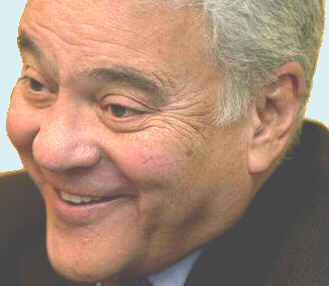 On
a 30 June:
On
a 30 June: 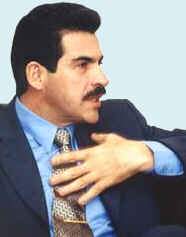 2002
Parliamentary and presidential elections in Bolivia. None of the eleven
candidates gets anywhere near the required 50% of the vote, so the Congress,
on 03 August, will have to choose who will take office on 06 August between
the two top vote-getters, Manfred Reyes Villa (20%) [< photo],
46, of the Nueva Fuerza Republicana, mayor of Cochabamba and former military
captain offering “social revolution”, and Gonzalo “Goni”
Sánchez de Lozada (22%) [31 May 2002 photo >], (72
minus 1 day), of the MNR, ex-president (1993-1997) who owns Bolivia's largest
mining company. The other presidential candidates are social democrat Jaime
Paz Zamora (Movimiento de la Izquierda Revolucionaria and NM) another ex-president
(1989-1993), Juan Evo Morales Aima (Movimiento Al Socialismo), 42, an indigenous
leader of Bolivia's coca farmers who was expelled from Congress in 2001
accused of inciting violence (18%), Ronald Maclean Abarda (Acción Democrática
Nacionalista), Alberto Costa Obregón (Libertad y Justicia), Felipe
Quispe Huanca (MIP) another indigenous leader and a former leftist guerilla,
Nicolás Felipe Valdivia Almanza (Condepa), Jorge Rolando Morales
Anaya (Partido Socialista), Max Johnny Fernández Saucedo (UCS), René
Oswald Blattman Bauer (Movimiento Ciudadano para el Cambio).
2002
Parliamentary and presidential elections in Bolivia. None of the eleven
candidates gets anywhere near the required 50% of the vote, so the Congress,
on 03 August, will have to choose who will take office on 06 August between
the two top vote-getters, Manfred Reyes Villa (20%) [< photo],
46, of the Nueva Fuerza Republicana, mayor of Cochabamba and former military
captain offering “social revolution”, and Gonzalo “Goni”
Sánchez de Lozada (22%) [31 May 2002 photo >], (72
minus 1 day), of the MNR, ex-president (1993-1997) who owns Bolivia's largest
mining company. The other presidential candidates are social democrat Jaime
Paz Zamora (Movimiento de la Izquierda Revolucionaria and NM) another ex-president
(1989-1993), Juan Evo Morales Aima (Movimiento Al Socialismo), 42, an indigenous
leader of Bolivia's coca farmers who was expelled from Congress in 2001
accused of inciting violence (18%), Ronald Maclean Abarda (Acción Democrática
Nacionalista), Alberto Costa Obregón (Libertad y Justicia), Felipe
Quispe Huanca (MIP) another indigenous leader and a former leftist guerilla,
Nicolás Felipe Valdivia Almanza (Condepa), Jorge Rolando Morales
Anaya (Partido Socialista), Max Johnny Fernández Saucedo (UCS), René
Oswald Blattman Bauer (Movimiento Ciudadano para el Cambio). 1834
Congress creates Indian Territory (now Oklahoma)
1834
Congress creates Indian Territory (now Oklahoma)
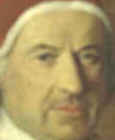
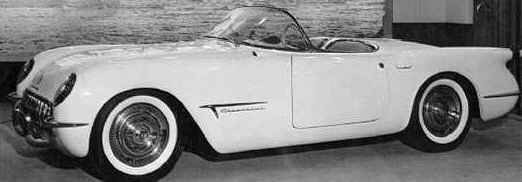 1953
1953
